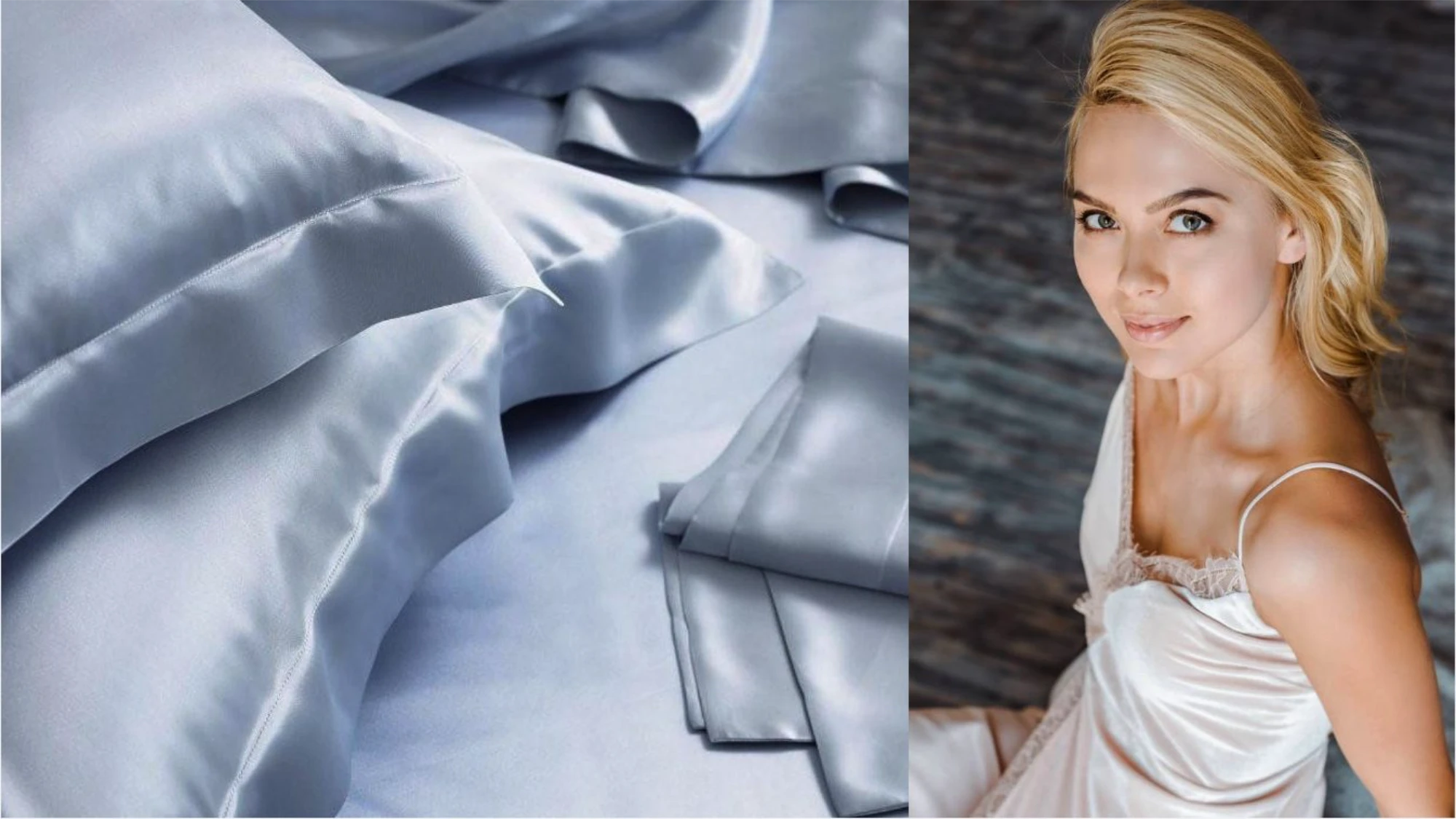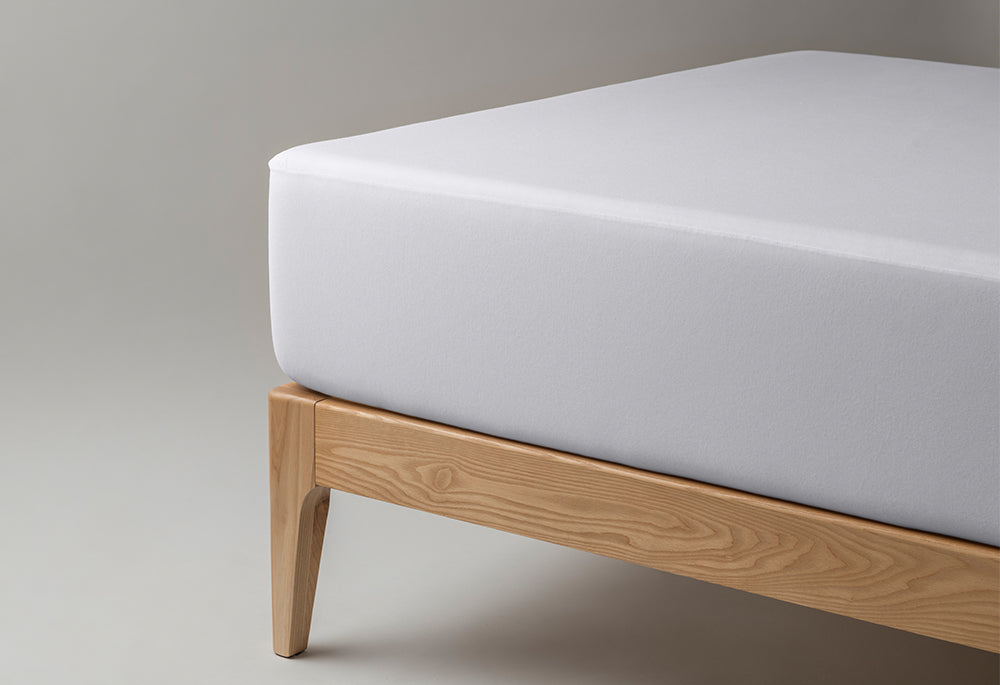Washing and Care of Silk

Learn how to keep your silk bedding clean, beautiful and shiny!
Silk is naturally antibacterial, gets cleaner at lower temperatures than cotton and can be washed less often than other bedding.
HOW TO WASH SILK
In short:
- Do not wash silk together with coarse fabrics
- Wash dark colored silk separately due to color bleeding
- Wash at 30 degrees, hand wash or silk/wool program in the machine
- Use detergent for silk, e.g. Milo or Dawn Silk Detergent
- Do not use fabric softener or fabric softener.
- Use the lowest spin speed
- Hang silk to dry
- Do not use a dryer.
- Iron the silk while it is still damp, use a pressing cloth/cloth.

How to proceed when washing silk bedding
Ideally, silk bedding should be washed separately in the washing machine, without any other laundry. Dark colored silk bedding can also transfer color to other fabrics during washing.
Silk is a delicate material woven from thin silk threads, so avoid letting your bedding come into contact with coarse fabrics such as bath towels, jeans, work clothes and coarse bedspreads. This will cause pilling on the silk bedding. The same applies to fabrics with zippers, buttons, etc. which can tear and damage the silk fibers during washing. If you are only washing small silk products, such as a pillowcase, a sleep mask or kimono, you can use a laundry bag to protect the silk.
Silk is washed on a gentle cycle at 30 degrees with a detergent for silk, e.g. Milo. Silk is naturally antibacterial and gets cleaner at a lower temperature than cotton.
Do not use fabric softener or fabric softener when washing silk. Fabric softener can damage the structure and properties of silk, so it should be avoided.
Use a low spin speed and hang the silk to dry, for example on a drying rack or shower rail. When hand washing silk, only squeeze the water out of the silk carefully before hanging it to drip dry. Alternatively, you can use a dry towel and squeeze out the moisture before ironing.
Important: Do not wring out wet silk as this can cause stretch damage to the silk fibers, and do not use a dryer. Tumble drying will cause pilling on silk bedding.
How often should I wash silk bedding?
Silk contains a protein called sericin, which contributes to its natural antibacterial and hypoallergenic properties. This protein makes silk resistant to the growth of bacteria, mold, and dust mites. Silk's smooth surface also means it attracts less dirt and impurities from the skin.
Silk bedding should be washed approximately every 2 weeks or weekly, depending on use and personal preference.
Every 2 weeks: If you don't sweat a lot at night, or if your bedding is used less often, washing your silk bedding every other week may be enough.
Weekly washing: If you have sensitive skin, allergies or sweat a lot and you use your silk bedding daily, it may be a good idea to wash it once a week.
Immediately after spills: If you spill something on your bedding, you should wash the stain with cold water immediately to avoid stains and damage to the silk. Gently rub a little mild detergent onto the stain with your fingertips and leave for about 10-15 minutes before rinsing with cold water.
Should I wash new silk bedding before using it for the first time?
When the bed linen leaves the factory, it is ironed and pressed according to all the rules of the art to bring out the beautiful and shiny silk surface that many appreciate. Whether you want to wash the bed linen is simply a personal preference, but you do not have to do this. Our silk bed linen is well packaged in packages and does not get dirty after it leaves the factory.
The fact that our silk is Oeko-Tex certified means that the textile does not contain allergenic and carcinogenic dyes. The certification also provides a guarantee that the product has been tested for the content of environmental toxins such as chlorinated phenols, phthalates, organic tin compounds, etc. The standard was developed in 1992 and 17 testing institutes carry out spot tests on manufacturers who hold approved certification.
You can therefore feel safe when you choose Bedtime's silk!
Keep the shine of your silk – iron it regularly!
HOW TO IRON SILK
In short
- Iron only when the silk is damp.
- DO NOT WRIST silk to remove excess water.
- Clean the iron beforehand.
- Use an undyed sheet between the ironing board and the silk.
- Iron the back (matte side) of your silk.
- Use a pressing cloth (handkerchief/glass towel etc.)
- Set your iron to silk or low temperature.
- Move the iron around, and don't leave the iron in one place for too long.

A pressing cloth between the silk and the iron protects the silk from scorching.
Ironing silk can damage the fabric if you are not careful, but it doesn't have to be difficult. In fact, we recommend ironing silk regularly to maintain its shine. Silk is best ironed when it is slightly damp, with the iron on the lowest temperature. Below are the detailed steps you should follow when ironing your silk sheets and nightwear:
Preparing silk before ironing
Silk is best ironed damp to minimize the effect of the iron's heat. We recommend ironing immediately after washing. – If you hand wash your silk, use a dry terry towel and squeeze very gently after rinsing to remove excess water from the fabric. Remember: DO NOT WRIST the silk, it can break the silk threads and cause stretching/tearing. – If you use a washing machine, you can iron directly.
Clean iron
Other preparations before ironing – Make sure the surface of the iron is clean. If your iron is stained with rust stains, you can remove them using a baking soda solution. DO NOT IRON if the iron is dirty or has rust stains, as this can permanently damage the silk. – Set the iron to the silk setting, or the lowest temperature if there is no specific setting for silk. – Prepare a pure cotton pressing cloth, white or undyed, and place a pad on the ironing board, such as a clean sheet. This is to prevent the ironing board from transferring color to your silk and leaving stains or marks.
Iron on the back of the silk and use a pressing cloth.
Silk fabrics use weaving techniques that give a shiny surface and a matte back. Always iron the back. You should iron silk section by section. Make sure the section you are ironing is smoothed out without wrinkles. You can also iron silk without a presser foot if the setting is on silk, i.e. low temperature. However, in general we recommend using a presser foot to cover the area you wish to iron to prevent potential damage. A small piece of thin cotton cloth, or a glass towel without color, would be ideal as a presser foot in this case.
Press the iron against the surface of the silk (or the pressing cloth) to begin ironing. Keep the iron moving to avoid local overheating that causes deformation of the silk fiber. – When you have finished ironing one section of the silk, smooth out another section and move the pressing cloth over to begin ironing until you are finished.
We recommend that you iron your silk after every wash or every other wash. Regular ironing helps preserve the natural shine of silk and can significantly extend the life of your silk.

Place an undyed sheet under the silk you are going to iron.










